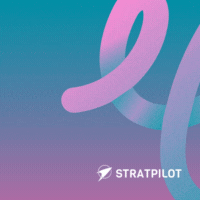In today’s rapidly evolving business environment, understanding and addressing skills gaps within your workforce is crucial for maintaining a competitive edge. Identifying these gaps not only enhances employee development but also ensures your organization is equipped to meet future challenges. AI can play a pivotal role in facilitating skills gap analysis, enabling teams to identify skill shortages and develop effective training programs.
This blog will explore how AI prompts can streamline skills gap analysis while providing actionable goal-setting insights for employee development. We’ll share practical prompt templates and examples of how AI can enhance your workforce strategy.
By – Vamsi Bumireddy
Why Use AI for Goal Setting in Skills Gap Analysis?
Using AI for skills gap analysis offers:
Data-Driven Insights
Identifies skill deficiencies with evidence.
Speed and Efficiency
Quickly pinpoint gaps and solutions.
Customized Solutions
Tailors training to individual needs.
Alignment with Business Objectives
Ensures skills align with goals.
Ongoing Monitoring
Tracks progress and adapts goals.

AI-Powered Prompts for Skills Gap Analysis
Here are some effective AI-generated prompts you can use to analyze skills gaps and create development plans for your workforce.
1. Identifying Skills Gaps
Prompt: “Analyze the current skill set of our team in [specific department/role] and identify three critical skills that need improvement for achieving [specific goal].”
Example: Analyze the current skill set of our team in marketing and identify three critical skills that need improvement for achieving our digital marketing goals.
Why This Works: This prompt enables a focused analysis of skills, ensuring that improvements are aligned with specific organizational objectives.
2. Developing Training Programs
Prompt: “Suggest three targeted training programs to address the identified skills gaps in [specific department/role]. Each program should include a brief description and expected outcomes.”
Example: Suggest three targeted training programs to address the identified skills gaps in our sales team. Each program should include a brief description and expected outcomes.
Why This Works: It ensures that training initiatives are directly aligned with identified gaps, making them more relevant and effective.
3. Creating Personalized Learning Paths
Prompt: “Generate personalized learning paths for employees in [specific roles] based on their current skill levels and career goals. Include recommended courses and resources.”
Example: Generate personalized learning paths for employees in project management based on their current skill levels and career goals. Include recommended courses and resources.
Why This Works: Tailored learning paths enhance engagement and effectiveness by addressing individual needs and aspirations.
4. Setting Employee Development Goals
Prompt: “Create a SMART goal for an employee in [specific role] to improve their skills in [specific area] over the next [time]. Ensure the goal is actionable and measurable.”
Example: Create a SMART goal for an employee in customer support to improve their skills in conflict resolution over the next six months. Ensure the goal is actionable and measurable.
Why This Works: SMART goals provide clear, actionable objectives that help track progress and ensure accountability.
5. Evaluating Training Effectiveness
Prompt: “Develop a method for evaluating the effectiveness of the training programs implemented for [specific department/role]. Include metrics and evaluation criteria.”
Example: Develop a method for evaluating the effectiveness of the training programs implemented for our IT department. Include metrics and evaluation criteria.
Why This Works: Establishing evaluation methods ensures that training programs are assessed for their impact, allowing for continuous improvement.
 Example: How AI-Generated Prompts Can Help an Organisation
Example: How AI-Generated Prompts Can Help an Organisation
Scenario
A tech company aims to analyze skills gaps in its software development team and implement training programs.
Prompt
“Analyze the current skill set of our software development team and identify three critical skills that need improvement for achieving our project deadlines.”
AI Output
- Advanced proficiency in cloud technologies for better deployment practices.
- Enhanced knowledge of agile methodologies to improve project management efficiency.
- Stronger skills in data analysis to inform product development decisions.
This AI-powered prompt helps the team pinpoint specific areas for development, allowing them to implement targeted training programs efficiently.
How Stratpilot Helps
Stratpilot is designed to empower organizations with AI-driven insights for effective skills gap analysis and employee development. With customizable AI prompts, Stratpilot assists teams in swiftly identifying skills shortages and helping in employee progress. Whether you’re enhancing your workforce capabilities or planning development initiatives, Stratpilot ensures your strategies are clear, actionable, and aligned with organizational goals.
Ready to elevate your workforce development efforts? Explore how Stratpilot can streamline skills gap analysis and foster employee growth. Sign up for Stratpilot today!
Frequently Asked Questions (FAQs)
-
What is a skills gap analysis?
Skills gap analysis identifies where employees lack essential skills, helping organizations address gaps with targeted training.
-
How does AI enhance skills gap analysis?
AI provides insights to identify deficiencies, suggests tailored training solutions, and aligns skill development with business goals.
-
What are SMART goals in workforce development?
SMART goals are Specific, Measurable, Achievable, Relevant, and Time-bound, helping track and measure development outcomes.
-
Can AI help with creating personalized learning plans?
Yes, AI can suggest tailored learning paths for employees, ensuring development aligns with individual and organizational needs.
-
How does Stratpilot support skills gap analysis?
Stratpilot empowers teams with AI prompts to identify skill shortages and create actionable training and development plans, fostering employee growth effectively.





